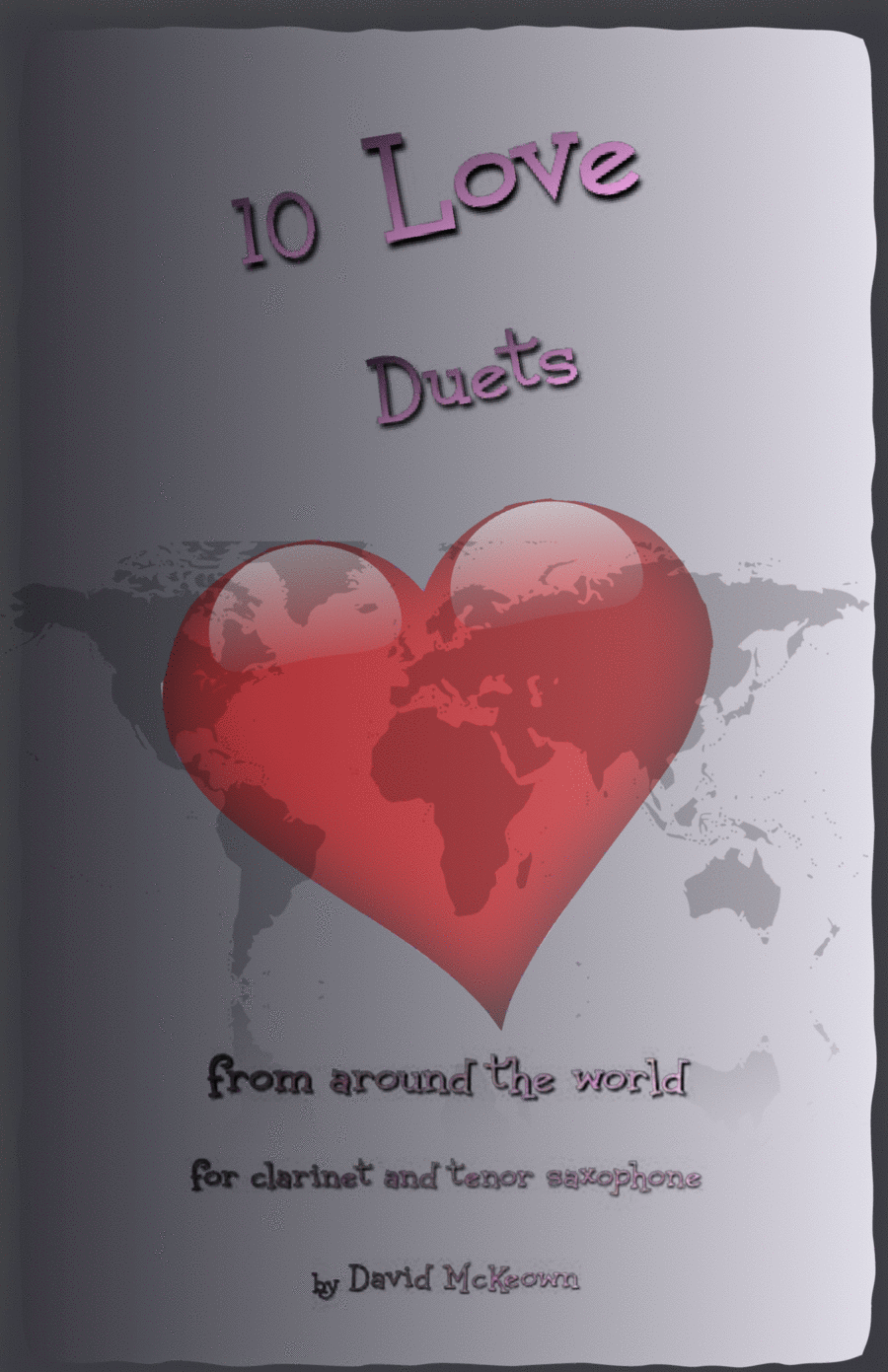Instrumental Duet Clarinet,Instrumental Duet,Tenor Saxophone - Level 3 - Digital Download SKU: A0.590882 Composed by David McKeown. Holiday,Multicultural,Wedding,World. Score and parts. 37 pages. David McKeown #6249085. Published by David McKeown (A0.590882). 10 Love Duets is an exciting collection of original compositions by David McKeown for one Clarinet and one Tenor Saxophone.The title of each Duet is Love, but in ten different languages. Each duet explores the romantic music of its country, with imaginative arrangements in each national style.Most of these duets are ideal for players of an Intermediate standard, with two or three more suitable for Advanced Intermediate. Click the link above to hear short samples of each duet on YouTube played on clarinet.10 Love Duets areperfect for concert performances large and small; each piece lasts between three and four minutes.Perfect as a musical gift for Valentineâs Day fully articulated to help interpret each style.great for helping with complex rhythms.road tested with scores of students and performed all over the world.fun to play.an exciting introduction to different musical cultures around the world.35 pages adding up to more than half an hour of quality music.The ten titles are, 1. Amore from Italy, as in a Verdi opera, 2. Ahava (×Ö·×Ö²×Ö¸×) from Israel, like a stately wedding dance, 3. Grá from Ireland, as in traditional Gaelic singing, 4. LâAmour from France, as in Parisian café music, 5. Ai (æ) from Japan, as in Enka popular music, 6. Love from USA, as in a Broadway musical, 7. Pyar (पà¥à¤¯à¤¾à¤°) from India, as in a Bollywood film, 8. Liebe from Germany, as in a slow expressive Baroque piece, 9. Hubb (Øب) from Morocco, as in traditional love poetry set to music, 10. Amor from Brazil, as in a romantic Bossa Nova from Rio. There are many more top quality arrangements and compositions by David McKeown for you to browse at https://www.sheetmusicplus.com/publishers/david-mckeown/6203
